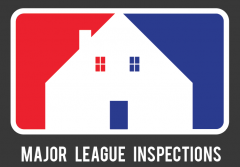 Elevation Certificates (ECs) are vital documents for property owners, especially those situated in flood-prone areas. They provide crucial information about a building’s elevation relative to flood zones, helping homeowners assess their flood risk and insurance premiums. This article explores the importance of Elevation Certificates, how to obtain them, and tips for ensuring their accuracy and effectiveness.
Elevation Certificates (ECs) are vital documents for property owners, especially those situated in flood-prone areas. They provide crucial information about a building’s elevation relative to flood zones, helping homeowners assess their flood risk and insurance premiums. This article explores the importance of Elevation Certificates, how to obtain them, and tips for ensuring their accuracy and effectiveness.
The Importance of Elevation Certificates
Understanding Flood Risk
Flood risk is determined by various factors, including the location of the property, its design, and the surrounding environment. Elevation Certificates play a pivotal role in this assessment by documenting the elevation of the lowest floor of a building compared to the Base Flood Elevation (BFE). The BFE is the height that floodwaters are expected to reach during a significant flood event, typically representing a 1% annual chance of flooding.
-
- Key Factors Influencing Flood Risk:
- Proximity to water sources
- Building occupancy type
- Structural design and foundation type
- Historical flood claims
- Key Factors Influencing Flood Risk:
Compliance with Regulations
Elevation Certificates are essential for ensuring compliance with local, state, and federal floodplain management regulations. Many municipalities require these certificates to enforce building codes that minimize flood damage and enhance community safety.
-
- Benefits of Compliance:
- Reduces potential legal liabilities
- Ensures eligibility for federal flood insurance
- Enhances community resilience against flooding
- Benefits of Compliance:
Impact on Insurance Premiums
One of the most significant advantages of having an Elevation Certificate is its potential to lower flood insurance premiums. Insurers use the data from these certificates to accurately assess risk and determine policy rates. By demonstrating that a property is situated above the BFE, homeowners may qualify for reduced premiums.
-
- How Elevation Affects Premiums:
- Higher elevations generally lead to lower insurance costs
- Accurate elevation data helps avoid unnecessary overcharges
- How Elevation Affects Premiums:
How to Obtain an Elevation Certificate
Initial Steps
The process of obtaining an Elevation Certificate begins with determining whether one already exists for your property. Several sources can provide this information:
-
- Local Floodplain Manager: Every community participating in the National Flood Insurance Program (NFIP) has a designated floodplain manager. They can assist in locating existing certificates or guide you through the application process.
- Previous Property Owners: If you are purchasing a home, ask the sellers if they possess an Elevation Certificate. This can save time and costs associated with obtaining a new one.
Hiring a Professional
If no certificate is available, you will need to hire a licensed professional, such as a surveyor, engineer, or architect, to create one.
-
- Choosing the Right Professional:
- Ensure they are certified to provide elevation information.
- Check their experience with flood-related assessments.
- Choosing the Right Professional:
Self-Certification Options
In some cases, homeowners may be able to self-certify their property’s elevation using a fillable form available on FEMA’s website. However, this option is generally less reliable than hiring a professional.
Understanding the Components of an Elevation Certificate
Key Sections of the Certificate
An Elevation Certificate contains several critical sections that detail the property’s elevation and flood risk factors:
-
- Property Information: Includes the address, flood zone designation, and building characteristics.
- Elevation Data: Provides measurements of the lowest floor and other relevant elevations.
- Certification Statement: A licensed professional must sign and stamp this section, validating the information.
Common Terminology
Familiarizing yourself with the terminology used in Elevation Certificates can help you better understand the document:
-
- Base Flood Elevation (BFE): The height floodwaters are expected to reach during a significant flood.
- First Floor Height (FFH): The elevation of the lowest floor of the building above the adjacent grade.
- Flood Zone Designation: Indicates the flood risk level for the property, such as A, V, or X zones.
Tips for Ensuring Accuracy
Regular Updates
Elevation Certificates should be kept up to date, especially if significant changes occur to the property. Any renovations or modifications that alter the building’s elevation may require a new certificate.
-
- When to Update:
- Major renovations or additions
- Changes in flood zone maps
- New construction in the vicinity
- When to Update:
Avoiding Common Errors
Many Elevation Certificates contain errors that can lead to increased insurance premiums. It’s essential to ensure that the certificate is accurate and complete.
-
- Common Mistakes to Watch For:
- Incorrect flood zone references
- Errors in elevation measurements
- Missing required photographs
- Common Mistakes to Watch For:
Quality Control Measures
To ensure the accuracy of your Elevation Certificate, consider utilizing services that offer quality control checks. These services can review existing certificates for errors and recommend corrections.
The Role of Elevation Certificates in Flood Mitigation
Impact on Community Resilience
Elevation Certificates not only benefit individual homeowners but also contribute to the overall resilience of communities. By ensuring that buildings are appropriately elevated, communities can reduce the risk of flood damage and enhance safety.
-
- Community Benefits:
- Lower overall insurance costs for residents
- Improved infrastructure planning and development
- Increased property values in flood-prone areas
- Community Benefits:
Supporting Floodplain Management
Elevation Certificates provide essential data that local governments use to develop and enforce floodplain management ordinances. This helps maintain compliance with NFIP requirements and ensures community safety.
Elevation Certificates and the NFIP
Navigating the National Flood Insurance Program
The NFIP provides flood insurance to property owners in exchange for compliance with floodplain management regulations. Elevation Certificates are critical in this exchange, as they help determine insurance eligibility and rates.
-
- Key NFIP Functions:
- Flood insurance policy issuance
- Floodplain management support
- Community rating system discounts
- Key NFIP Functions:
Changes in NFIP Requirements
With the introduction of Risk Rating 2.0, the NFIP has updated its requirements regarding Elevation Certificates. While they are no longer mandatory to purchase flood insurance, providing one can still offer benefits.
Frequently Asked Questions About Elevation Certificates
Do Elevation Certificates Expire?
While Elevation Certificates do not technically expire, they can become outdated if flood maps are updated or if significant changes occur in the floodplain. Regular reviews are recommended to ensure compliance.
Can Elevation Certificates Change Flood Zones?
An Elevation Certificate itself does not change a flood zone designation. However, it can be used as part of a request for a Letter of Map Amendment (LOMA) to appeal a flood zone classification.
How Much Do Elevation Certificates Cost?
The cost of obtaining an Elevation Certificate varies depending on several factors, including location, property type, and the professional hired. On average, costs can range from a few hundred to over a thousand dollars.
We Provide Elevation Certificate Services
Elevation photos capture visual documentation of a property’s elevation in relation to the ground level, neighboring structures, and potential flood lines. These photos are crucial for assessing the property’s vulnerability to flooding and for determining compliance with floodplain management regulations.
> Learn More
Elevation Certificates are invaluable tools for property owners, particularly those in flood-prone areas. They not only help assess flood risk and insurance premiums but also ensure compliance with local regulations. By understanding their importance, obtaining accurate certificates, and keeping them updated, homeowners can significantly mitigate their flood risk and potentially lower their insurance costs.
Contact Us (954-909-1255) For a Free Consultation!
—
 About Major League Inspections
About Major League Inspections
Our home inspections involve thorough evaluations of residential properties to identify any issues, ensuring that buyers and sellers are well-informed about the property’s condition. Our commercial inspections focus on assessing the structural integrity, safety features, and compliance of commercial properties with building codes and regulations. Both types of inspections are crucial for promoting safety and informed decision-making. Our environmental inspection services address damage caused by water, fire, mold, and other disasters. When you experience environmental damage, it’s crucial to conduct a thorough inspection first to identify any hidden issues that could lead to problems in the future and help a restoration team properly restore your property.
> Learn More